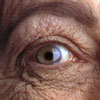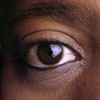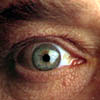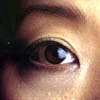How the Human Eye
Receives Light
So how does the human eye
factor into why the sky is blue? There are two parts to this
question.
The first part has to do with how the
human recognizes and
perceives color. The visible light from the sun enters the eye through
the pupil the lens then focuses that light on to the retina (the
inner surface on the back of the eye), then the information from the
retina is then transferred to the brain via optic nerve.
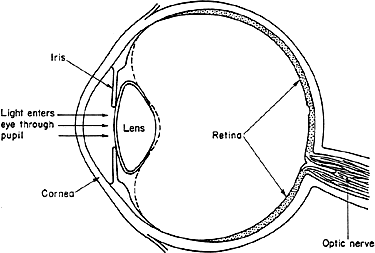
The retina is responsible for how our eyes perceive color. The
retina is
lined with photosensitive cells that contain pigments, which absorbs
photons. There are two types of photosensitive cells: rods (perceives
light intensity) and cones (recognizes various colors). We are
going to focus on the cones, because after all this is what is
perceiving the color from the sky. There are three sets of cones: red
pigment, green pigment, and blue pigment. These three cones work
together to recognize the full visible light spectrum, but they do not
recognize all colors equally. Of all the ROY G BIV photons the retina
is actually less sensitive to the violet photon.
The second part that factors into this is the sun. The sun does not
emit all of the ROY G BIV photons equally. The violet photon is emitted
the least compared to the rest of the photons.
The blue and violet photon gets scattered the most out of all other
photons in the atmosphere, but the blue photon is of more abundance
than the violet photon and this is why we perceive our sky to be
blue!!!


